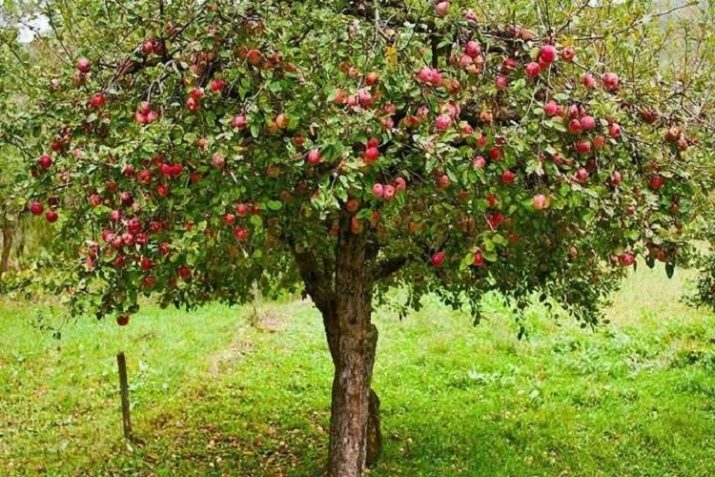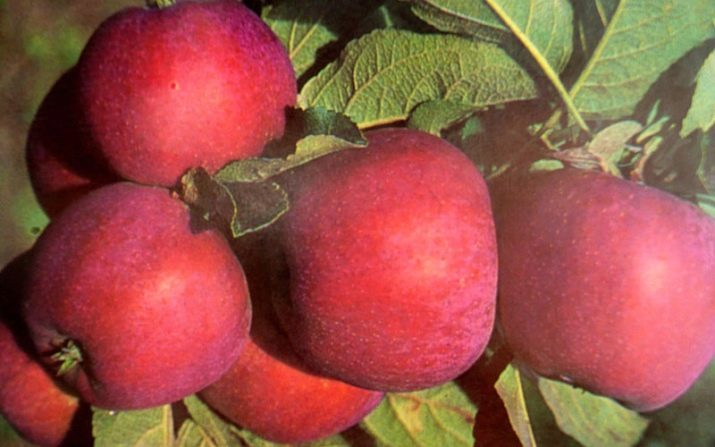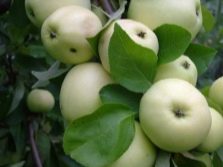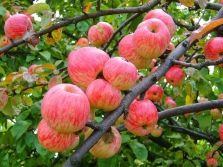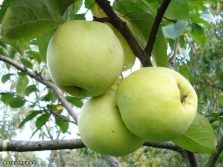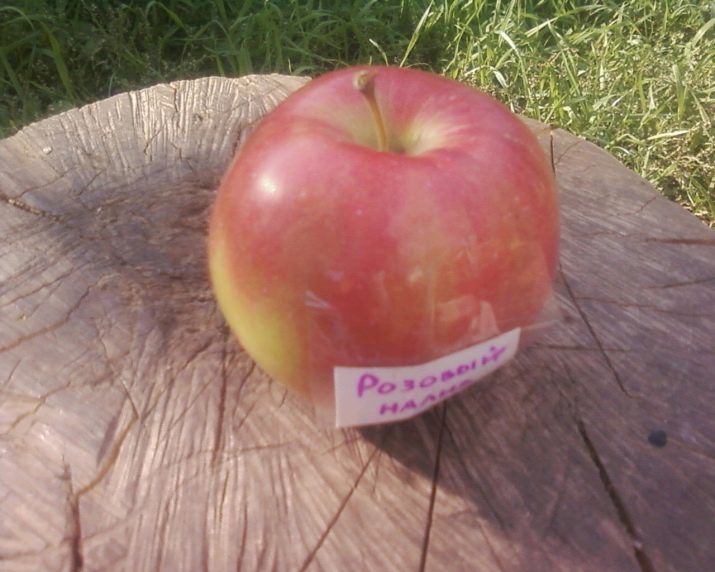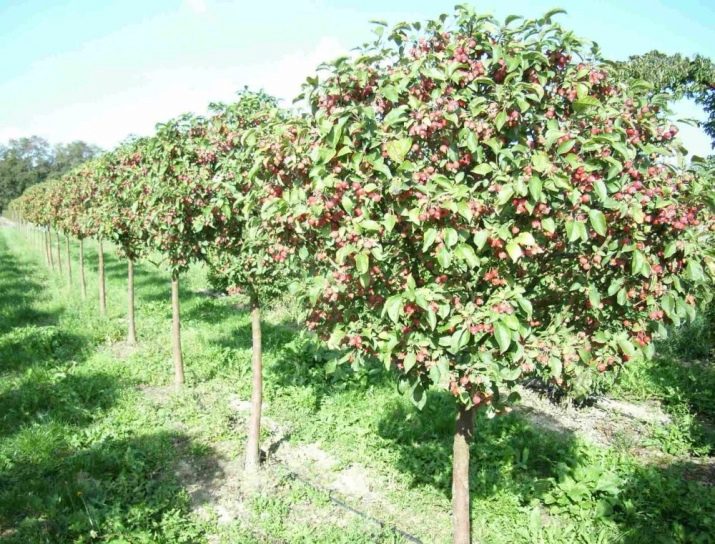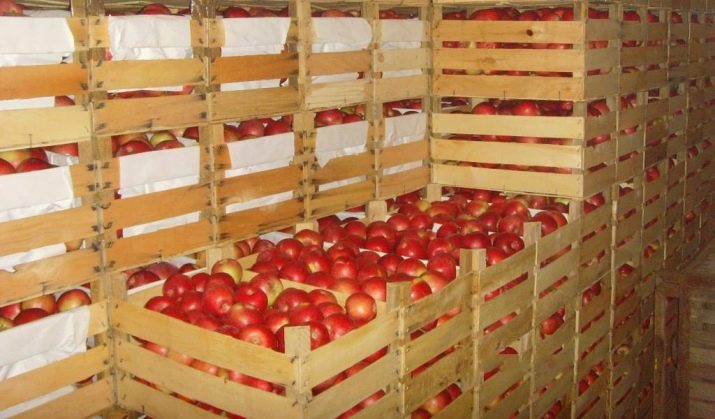Apple "Pink filling": a description of the variety and agricultural technology
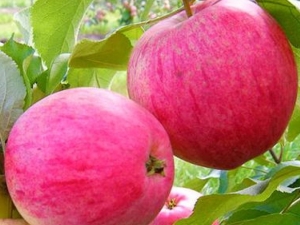
Growing apple trees in summer cottages and in large farms requires patience and extensive knowledge.But these trees, if properly cared for, can reward gardeners with a quality harvest of tasty and healthy fruits. To do this, it is important to choose the type of grown seedlings. In this article, we will dwell on the description of the apple variety “Pink filling”, find out how the agricultural machinery prescribed for this tree differs, and also read the reviews of gardeners.
History reference
Unlike most hybrids that are popular nowadays, which have not only the date and place of birth, but also a specific author, the story of the "Pink fill" is more complicated. Not only is the exact origin of these apples still unknown, this variety also has several names at once, which adds further confusion to the attempts to track its history.
In the people "Pink filling" is often called the "Robin". In turn, “Robin” is often identified with the variety “Suisplep”. The apple tree is obliged by this name to the Estonian manor Suislepa, in which the first representatives of this variety were found at the turn of the XVIII and XIX centuries.
Whether it was the fruit of the deliberate labor of the owner of the estate and the gardeners subordinate to him, the accidental discovery of the peasants working on the estate or the result of spontaneous hybridization is not known for certain. Even the varieties that participated in the formation of the "Pink filling" are unknown. Opinions of scientists on this occasion are divided - some believe that the basis of the variety was of French origin, while others believe that the “Robin” appeared from Persian varieties of apple trees.
The variety was included in the state register in 1959.
Description
The height "Pink filling" refers to sredneroslymi varieties. Usually the height of an adult tree does not exceed three meters. At the same time, the trunk is somewhat wider than is usually found in apple trees of such a height. In the first years of development, the skeletal branches are directed upwards, due to which a dense and relatively narrow crown in the shape of a pyramid is formed at the apple tree. Over the years, the branches are more and more bent to the sides, and the crown becomes wider, acquiring at first rounded and then wide-pyramidal shapes.
Young shoots of “Robin” are usually lowered down, painted in red-brown color and have a moderate width. Another characteristic feature of this breed is that all leaves have an ovoid-oval shape and are directed downwards.
This variety is considered self pollinatedand, therefore, able to form the ovary in the absence of external pollinators. However, the presence of other varieties in the neighborhood may help increase yields. Especially good in this regard are “White filling”, “Melba”, “Antonovka” and “Grushovka”. The life of a tree of this breed reaches a solid 70 years.
Fruit
"Pink filling" refers to the early summer varieties, but the exact date of the beginning of the harvest depends on climatic conditions. If the summer was warm and rainy, then you can pick apples at the end of July. Droughts or frosts can extend this period until the second half of August. The average yield of “Robin” is from 50 to 80 kg of fruit per adult (but not old) tree per season.
The first fruits can be expected as early as 2 years after planting the seedling, and trees usually come out to full fertility after 4 years of development.
A characteristic feature of apples of this variety, which gave it a name, is their color. Usually they have a background white or greenish color, on which a diffuse thick pink-red blush with a striped texture is clearly visible. The mass of fruits does not exceed 150 grams, and the diameter is 14 cm. The shape of “Robin” apples is usually rounded-flattened.
The fruits are characterized by high juiciness with dense flesh, and a pleasant sweet-sour taste, which indicates a high and balanced content of carbohydrates and acids (including vitamin C).
Virtues
In addition to excellent yield and refined taste, “Suislepskoe” also pleases with its resistance to temperature changes - this variety is equally well tolerated by frosts with temperatures down to –35 ° C, and forty-degree heat. Moreover, a short-term drought will not even reduce the harvest, but will simply shift it to a later date. And on windy or sunny days, you do not even need to worry about the safety of apples - they are firmly attached to the tree and are not prone to the development of burns.
Steadily tree and to many diseases. Strong immunity is observed to such a dangerous disease as a scab.
Another advantage of the "Pink filling" - low demands on the mineral composition of the soil.
disadvantages
The main problem in growing "Robin" - a high susceptibility to the development of fruit and root rot. Especially the problem manifests itself in regions with high humidity and heavy rainfall, as well as in case of improperly organized irrigation.
It does not develop this variety and the mechanism of protection against insect pests. Particularly affected by its landing from the invasions of codling moth. Despite the long term, the period of active fruiting at the “Pink filling” is up to 40 years. After that, the fruits cease to appear on the apple tree.
Another disadvantage of the variety is that due to its high carbohydrate content, its fruits do not have a long storage time. therefore it is absolutely not necessary to make stocks for the winter out of fresh apples - they will be left to a maximum until the end of the first week of October, after which they will have to be thrown away.
Landing
“Pink filling” is usually planted with seedlings, and this can be done both in spring (in April) and in autumn (from the last week of September to the first week of October, when the ground was not frozen yet).
For an apple orchard, choose a well-lit area, the soil on which will be well permeable to moisture. The distance between saplings (as well as between saplings and other trees) should not be less than three meters. The optimal depth of the hole for a seedling is 80 cm, and its diameter should be about 90 cm.
Care
Due to the simplicity and stability of the variety, care for him is not extraordinary for apple trees. Because of the thick crown, it is important to do pruning every spring, and the time for this procedure is only before the appearance of the first buds. After that you need to produce additional fertilizing with the help of complex mineral or organic fertilizers.
In the autumn, be sure to whitewash the trunk of the tree, and in case of snow fall, tamp it down as much as possible.
The rest of the agricultural technology is reduced to regular watering, pest control with insecticides and thorough weeding of adjacent areas.
Reviews
Most gardeners in their reviews note the beautiful appearance of fruits and trees, high yields, pleasant taste, high climatic stability and unpretentiousness of the "Pink filling."
Among the shortcomings noted susceptibility to rot, weakness to moth and a short shelf life of fruits.
The technology of proper planting of the apple, see the following video.

